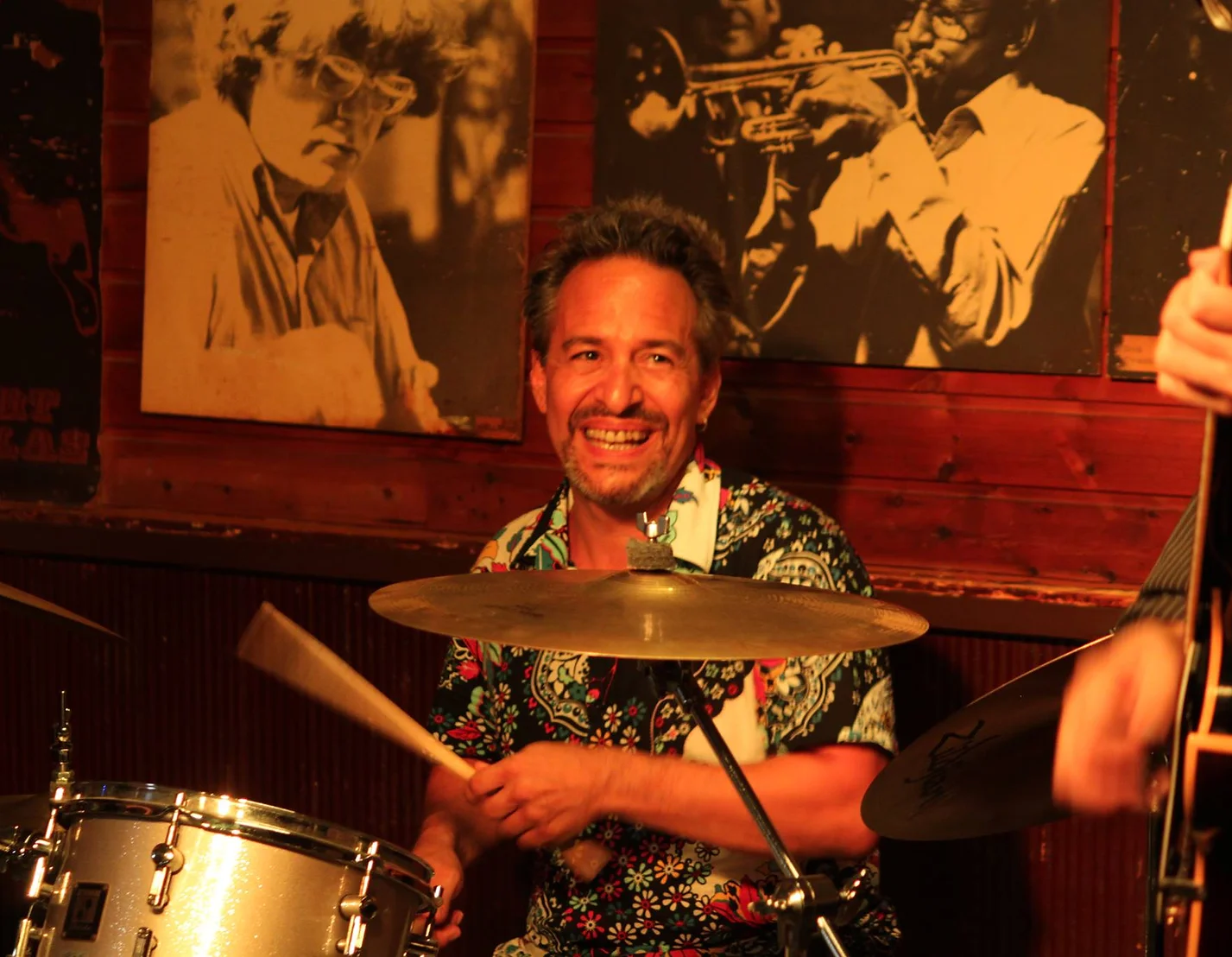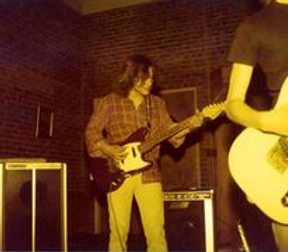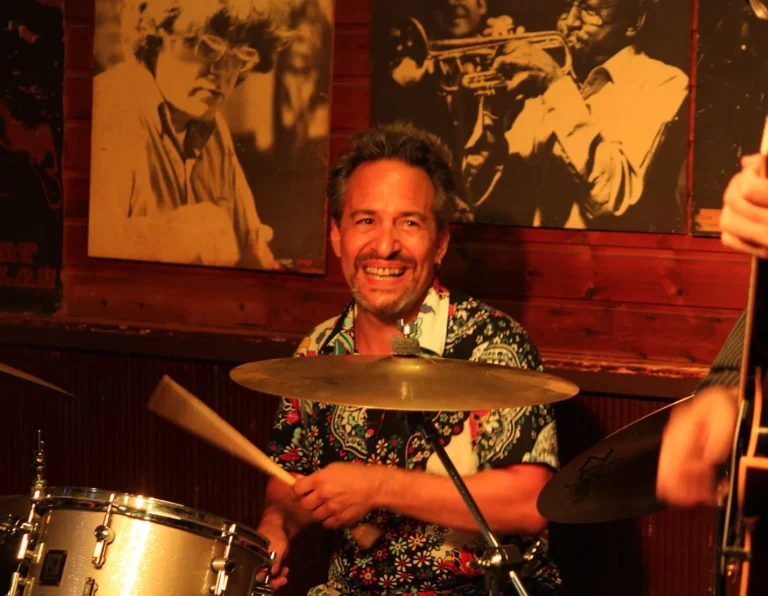

“I’m not saying I’m a master here, but the difference between the master and the student is that the master has failed more times than the student has tried.”
Although notedly understated, Robert Castelli is the definition of a masterful musician. Incorporating a lifetime’s worth of experiences, influences, and chops, Castelli has led a career on his own terms. With his current band BOOM!, Castelli defies genre and crafts music that could loosely be defined as jazz, but incorporates influences from all corners of the globe. Trained on the drums, piano and guitar, Castelli is a modern renaissance man.

Music has always been a constant present in Castelli’s life. He grew up in Ossining to a musical family, with his dad, grandfather and uncle all being professional drummers. Family, however, was not the biggest influence for Castelli growing up. Like many other kids, he credits his early influences to AM radio, television and his older brother’s record collection. Castelli thanks growing up outside New York specifically for his wide influences. Turning on the radio, Castelli recalls, “Bam, it’s The Beatles, and then next it’s James Brown, and then it’s Beethoven.”
As a kid, Castelli was able to find musical influences everywhere. “I think because my father was almost blind,” he remembers. “I had a way of perceiving the world more aurally than visually.” Watching TV as a child, Castelli recalls the themes of shows like Hawaii Five-O, Mission Impossible, and Sanford and Sons, which further piqued his interest in composition.
If Castelli’s influences began with radio and television, they were tempered by participation in New York City’s live music scene. As a young man, Castelli immersed himself in the many musical traditions of New York City. At the city’s Latin Clubs, he was introduced to Afro-Cuban rhythms, and playing with a band from Jamaica, he learned Caribbean melodies. In Castelli’s words, he always kept “his mind, his heart and his ears open.”
Castelli admits that despite his passion, living as a performing artist in America was not all roses. Slowly, Castelli became disillusioned with the increasing materialism he saw in the music industry, political corruption and a general toxic energy in the US. On top of this, Castelli faced many personal losses during this time, with twelve people in his life passing away. This made Castelli contemplate life, and pushed him to take a chance and travel to Europe in 2003.
At first, Europe was a temporary pitstop for Castelli. He met an Austrian guitarist, who, despite never having played with him, wanted to start a band and tour Europe. Castelli recalls him saying, “If it doesn’t work out, no hard feelings,” which was an attitude he respected. Soon Castelli was settled in Vienna, where he encountered a whole new outlook on music. “They didn’t say he plays guitar better than someone else. They all came and celebrated life or the harvest or whatever. And that’s the purpose of music and the human experience.” To Castelli, this attitude represented “folk music” in its truest form: not a genre, but the music of the people.

Soon, Castelli found himself in Barcelona, the vibrant heart of Spain’s Catalonia region. Since moving to Barcelona, Castelli has immersed himself in cultural traditions from across the world. Playing live shows in Barcelona, he had chances to collaborate with musicians from Brazil, Russia, Cuba and more. Balkan musicians gave him the opportunity to experiment with odd meters, and Sudanese musicians introduced him to Afro-Arab rhythms. These experiences speak to the reality of jazz as “an ever evolving art form with influences from other cultures.”
This vibrant mixing of influences pervades Castelli’s music, most notably his newest release Party at One World Plaza. The album defies genre, seamlessly slipping between disparate ends of the Earth. The opener “Vamos” incorporates syncopated Afro-Cuban rhythms reminiscent of his youth in New York’s Latin jazz clubs. “Floatin”’s groovy rock influenced guitar harkens back to Castelli’s childhood influences in The Beatles and Jimi Hendrix.
The standout track is “For the Fallen,” a dreamy and meditative journey aided by soft keys and guitars. Castelli wrote this track in memory of the twelve people he lost before moving to Europe. Before playing, Castelli asks his audiences for 10 seconds of silence to remember everyone that has been lost.
The title track and “Samba Wamba Bamba” reflect his experiences playing with artists from around the world while living in Europe. In all, this album is like a roadmap through Castelli’s life giving audiences an idea of a fraction of his influences and experiences. In other words, this album reflects Castelli’s own definition of music – “the human heart and an intellect filtered by life experience.”
In a life full of change, there has been one constant for Casteli: live music. Castelli views live shows as a conversation between musician and audience. “Somebody says something, it makes you laugh. Those people laugh. Something makes you think, makes you feel, makes you cry.” This energy bouncing between the stage and the audience unites everyone in the room. Thinking of his live shows, Castelli recalls “whether it was 500 or 30,000 people, they all became like one consciousness. That is the real power of music.” To Castelli, in a world where we have more and more entertainment at our fingertips, it is important to go out and support live music venues. Live music, to Castelli, not only supports the artist and the club, but is a personal experience like no other.
Castelli, however, has noticed some issues in the live music scene that need addressing. A growing materialism in the music industry has led many venues to support what will make the most money, rather than what music is most meaningful. Additionally, this material focus has led to an increased burden on the musicians themselves to attract audiences.
He pointed out some more institutional issues regarding youth involvement with music as well. “If you don’t have those university connections or you’re not in the club every night it’s really hard to get a situation where you can get viable work.” Castelli says that access to money gives many university-trained musicians a leg up when building connections. This has dissuaded many people who don’t have the resources to get professional training from continuing. Castelli argues that we need to break this stigma, citing the greats. “A lot of the best jazz musicians were not formally trained. They just stayed with it.”
Castelli still sees many young people staying with it, giving hope for the future of live music. Many young people have things pulling them in directions other than music. Castelli remembers his childhood, with a father afraid he was a poser, and a mother wanting him to find other work. In face of obstacles like these, Castelli has noticed drive among youth – “the young people that I know that play music have a passion for it.”
Robert Castelli is returning to the US in May for a series of shows in and around New York City. On May 30th, he will play Jazz on Main in Mt Kisco, NY. Following this show near his hometown of Ossining, he will head to Manhattan. On June 1, he will play Harlem’s Shrine World Music Venue, followed by a set at Silvana on June 2. After these American shows, Castelli will head back across the pond to London, England to record a series of instructional videos.
35 years after beginning his career, Castelli is still paving his own path through the music world. He remains dedicated to sharing the importance of live music and ensuring that the next generation of musical talent can perform and absorb music like he has.
Enjoy Robert Castelli and his band BOOM! performing “Vamos” at Vienna’s Porgy & Bess Jazz Club.
The post Robert Castelli: The New York – Barcelona Connection appeared first on NYS Music.








